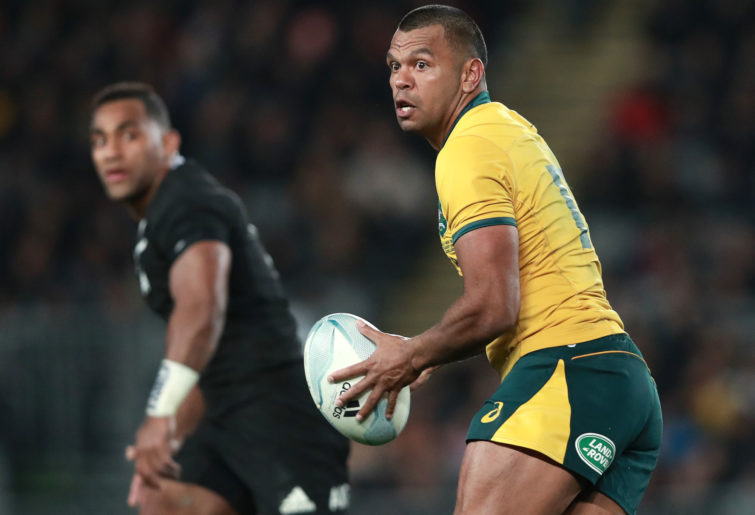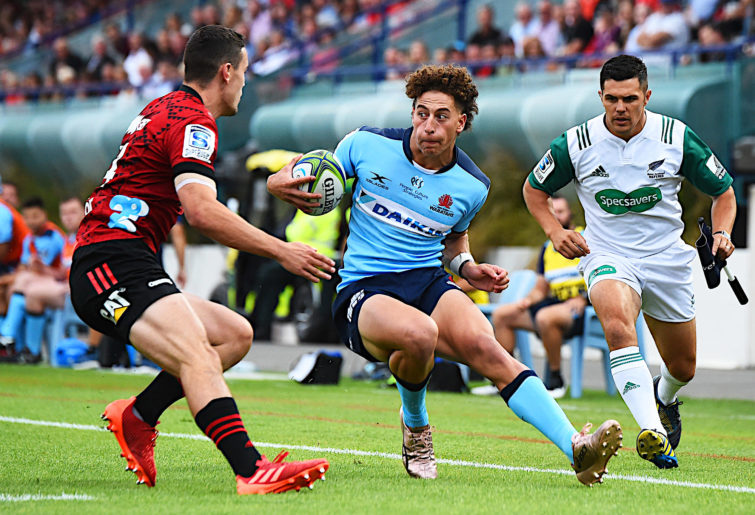There are a lot of reasons why Super Rugby stopped working, especially for Australian fans.
But I’ve sometimes wondered if one of the reasons was the building frustration for many Australian fans that Super Rugby could never quite deliver something akin to what the NRL and AFL give their fans to enjoy every year.
With Super Rugby expanding to include more Australian teams, along with the conference system, perhaps many Australian fans thought they could experience something close to a national domestic competition.
But alas, with time-zone irritations, the Super Rugby final hardly ever played in Australia, and years without any Australian teams even being in the final, the frustration only grew. And gradually Australian fans have come to realise that Super Rugby can never play the role they hoped it would.
Of course, the thing is, it was never actually designed to play that role in the first place!
New Zealand and South Africa certainly didn’t need it to play that role within their countries since they already had traditional domestic tournaments in place. Originally, for New Zealand rugby, apart from raising revenue, one of Super Rugby’s main purposes was to identify and polish players ready for Test level.
And New Zealand rugby will continue to see this as one of the main roles of their Super Rugby teams going forward. This system has served the All Blacks and rugby in New Zealand so extremely well, that you can be sure the administration will do everything in their power to maintain this system. This includes keeping all their Test players and potential Test players within their own teams, where they can manage the style they play, and condition and rest them in a way that best serves the All Blacks.

(Photo by Hagen Hopkins/Getty Images)
Australian fans need to be aware of this in their hope for a Trans-Tasman competition. Many Australian fans might be thinking a good structure would be to have five Australian teams included. But it needs to be realised that this will make the Australian teams less competitive overall. Even four teams is a stretch.
Yes, Australia won Super Rugby when they had five teams, but notice this did nothing to stem the declining interest in Super Rugby. The overall lack of competitiveness has made it hard for Super Rugby to win fans in Australia.
If Australia has five teams in a Trans-Tasman competition, they should not be expecting an Australian team to win it very often, and probably not be in the final very often either. And so Australian fans will be disappointed if they are expecting a Trans-Tasman competition with five Australian teams to deliver something close to an NRL or AFL competition experience.
Further to this, it’s just going to be a real drag for New Zealand fans. It would be like Japan expecting a second team in Super Rugby, or South Africa expecting six teams all over again with many of their best players away in Europe.
A possible way to solve this problem and provide the required depth needed for five Australian teams might be to recruit a certain amount of Argentinian and South African players. However, this relies on enough good players being available and not involved elsewhere. It’s possible, but it’s still an unknown factor to rely on.
Further to this, in order to have enough content with five teams each, the teams will be forced into conferences all over again where they will play all teams once, but their own conference teams twice. This will raise questions of fairness for the stronger conference. And a home-and-away season involving all ten teams would be too much content to fit within the 18-20 week window.

(Tracey Nearmy/Getty Images)
So what if Australia has less teams? In the NRL, A-League and the NBL, New Zealand fans don’t expect to have any more teams. They just make do with what they have. Maybe Australian rugby fans need to do the same in a Trans-Tasman competition?
The problem with this, however, is even if less Australian teams resulted in them being more competitive and one of them winning more often with less of a domestic presence, then you’re straight back to Super 12 square one again, with the growing desire in Australia to have more teams and spoil it all over again.
A Trans-Tasman competition might be better than Super Rugby for many Australian fans, but it won’t satisfy them in the way that many think it will. It won’t be long before Australian fans start wishing they had their own domestic competition.
However, the problem with a standalone domestic competition in Australia is the risk that it won’t bring in enough revenue to keep their top players – or at least, it will take too long to do so. Many Australian fans are happy to take this risk.
But remember, the one team that truly has the ability to make the headlines, win fans to the game in Australia, and bring in plenty of revenue is the Wallabies. Think about 1998 to 2003.
If Australia loses even more of its top players, and the Wallabies decline even further, it may put rugby in a worse position than the A-League, and set Australian rugby back for generations.
Such a domestic competition will forever struggle to win fans and raise revenue because it can’t attract and keep its top players. It will be a deep hole to climb out of. And it will be especially dark in that hole come Test season.

(Photo by Hannah Peters/Getty Images)
It is easier to see the problems than it is to see a clear solution.
However, here is a less than ideal model, but which might tick the most boxes overall.
As in any model, Test rugby will kick off in July with the in-bounds, followed by the Rugby Championship, followed by the European tours. This is pretty much fixed. The question is what to do with the 18-20-week window from the end of February to the end of June?
Assuming that Super Rugby does not continue with South Africa and Argentina, what if we could have a domestic competition and a Trans-Tasman competition? There are two ways to do this.
The first way I predict might appeal to many Australian fans, but would not appeal to New Zealand. And it wouldn’t raise as much revenue as the second way either. In any case, the first way would be for the year to kick off with a revamped eight-team NRC to be played in Australia, while the Mitre 10 Cup is played in New Zealand – with all the Test players available.
Following these two competitions, the top four teams from each would play in a truncated Trans-Tasman competition, with two pools of four teams each. In each pool would be two Australian teams and two New Zealand teams.
Play all the teams in your own pool, with the top two teams moving through for cross-over semi-finals and a final. All the other teams from the NRC and Mitre 10 Cup that did not qualify could play in a knock-out competition at the same time.
The beauty of this model is that fans can follow their team in their own domestic competition and then in the Trans-Tasman competition, and potentially be crowned champion of champions. And excitingly, the team that wins the Trans-Tasman competition may not even be the same team that won their respective domestic competition!
The downside, however, is that some of the best players may be in teams that don’t qualify for the Trans-Tasman competition, and therefore miss out. Thus, the competition could miss out on potential bums on seats and further broadcasting revenue.
In any case, I predict this idea won’t suit New Zealand rugby because they will be looking to use their Super Rugby teams in the same way that has served their purposes so well in the professional age.
The second way to have a domestic and Trans-Tasman competition would be to, again, start the year with a revamped eight-team NRC in Australia, while the Mitre 10 Cup is played in New Zealand.
At the risk of distracting people from the concept, the NRC teams I would include would be Western Force, Melbourne Rebels, Canberra, Brisbane, Sydney, NSW Country, Queensland Country and Fijian Drua based in Western Sydney to tap into that region’s rugby potential.
Following the NRC and Mitre 10 Cup would be the Trans-Tasman competition made up of the following Super teams: ACT Brumbies, NSW Waratahs, Queensland Reds, Highlanders, Crusaders, Hurricanes, Blues and Chiefs.

(AAP Image/Chris Symes)
With this model, the Trans-Tasman competition no longer needs to fulfil the role of a top-level domestic competition for Australian fans because the NRC now provides that – with all the Test stars playing in it.
Instead, the Trans-Tasman teams act as representative teams that attract fans in the way that the Super 12 teams originally did. And because they are representative teams, there is no need to have finals.
The Trans-Tasman competition is simply an intense, straight seven weeks, where every team plays every other team only once, with a first-past-the-post winner. Every game is an event. Every game is a must-win special event, just like State of Origin in the NRL.
The Trans-Tasman competition is not designed to expand. Expanding it only takes away from it – just like it would if they tried to play more State of Origin games each year. Less is more. It drives up revenue because it never gets old or tired. It leaves fans wanting more of its intensity and to see the best verse the best again.
And on top of this, Australia can use the Trans-Tasman competition for the same purpose as New Zealand does for the All Blacks – to identify and pick the Wallabies. With this common purpose, both countries can move together without banging into each other all the time.
The year would run as follows: domestic comps from late February to April, then the Trans-Tasman comp from the end of April to June, then the internationals between July and November.

(Cameron Spencer/Getty Images)
Three more small points. Firstly, in New Zealand, this model would change the structure of their season with the Mitre 10 Cup effectively swapping places with club rugby. However, it’s important to note that it doesn’t change the purpose of these two components within their system, and so it shouldn’t affect the overall results of their system.
Secondly, while this model is somewhat a bag of mixed goodies, the length of season for the domestic competitions is similar in length to the current NRC and Mitre 10 Cup, but with increased interest because all the Test stars are available. Fan surveys indicate that a Mitre 10 Cup with all the Test players available would be quite popular in New Zealand, and perhaps feel like a return to the NPC glory days. And for Australia, it allows them to build the basis of a viable domestic competition and establish any new brand names, without taking the risk of putting all their eggs in a domestic competition alone.
And thirdly, this model might go some way to relieving the tension between the Sydney clubs and supporters of the NRC in Australia. While the NRC would gain pride of place with all the Test stars available, it would no longer clash with the club competitions at the back end of their season.
Instead, all of the NRC players who don’t qualify for the Trans-Tasman competition would return to their clubs at the end of April, and the non-Test Trans-Tasman players would return to their clubs in July. That leaves room for ideas such as a national club championship if there is the appetite for it.
That’s a pretty good deal for both the NRC and the clubs. It increases their value to be bundled together in an overall package.
It’s not an ideal model, but it might just tick the most boxes overall.

































































































